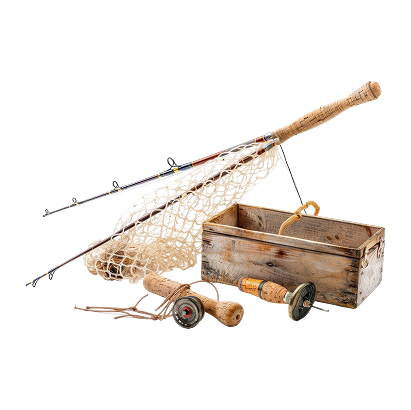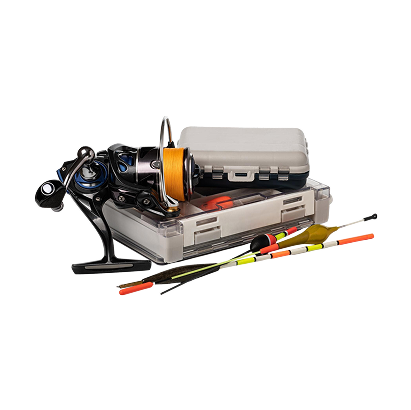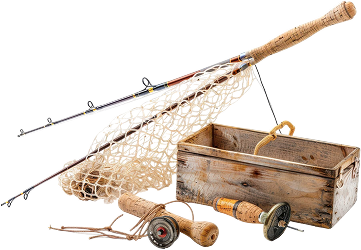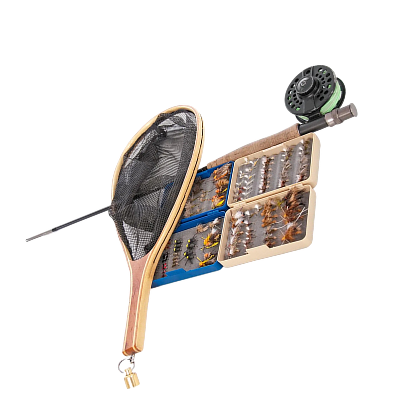Welcome to The Current, the blog at the heart of... Full Story

A Brief History of Fly Fishing: From Ancient Art to Modern Passion
Fly fishing is more than a method of angling—it’s a thread that weaves through centuries of culture, craftsmanship, and quiet obsession. From ancient Macedonia to modern mountain streams, the practice of casting a delicate imitation to a wary fish has endured, evolved, and inspired. But where did it begin? And how did we get from horsehair lines and feathered hooks to carbon-fiber rods and precision drag reels?
Let’s take a journey through the surprisingly rich—and often poetic—history of fly fishing.
⸻
Ancient Beginnings: Macedonia and the First Recorded Fly
The earliest known written reference to fly fishing comes from the Roman writer Claudius Aelianus around the 2nd century CE. In his book On the Nature of Animals, he describes Macedonian anglers on the Astraeus River using artificial flies made from red wool and feathers to imitate insects and catch fish called “speckled fish”—likely trout.
“They fasten red wool… round a hook, and fit on to the wool two feathers that grow under a cock’s wattles.”
— Claudius Aelianus
This description is remarkably similar to what we might call a fly today. These early anglers were already practicing the basic idea that defines modern fly fishing: creating a lightweight, lifelike imitation of prey and presenting it delicately to fool a fish.
⸻
Medieval England: The Roots of Tradition
Fly fishing truly began to take shape in medieval England, where it gained traction among the gentry during the 14th and 15th centuries. The first known book dedicated to the subject was The Treatyse of Fysshynge with an Angle, published in 1496 and attributed to Dame Juliana Berners, a Benedictine nun.
The Treatyse detailed gear, techniques, and fly patterns. It also offered something more profound: an ethos of respect for nature, the fish, and the experience of angling itself.
“Ye shall not be too greedy in taking of your game, as to much at one time… for it will destroy your sport.”
— The Treatyse of Fysshynge with an Angle
This early guide laid a spiritual and ethical foundation that still echoes in the fly fishing community today.
⸻
The Golden Age: 17th–19th Century England and the Rise of Dry Fly Fishing
Fly fishing matured significantly in the 17th century, particularly with the publication of Izaak Walton’s The Compleat Angler in 1653. Part fishing guide, part pastoral philosophy, the book celebrated the beauty of the countryside and the contemplative joy of fishing. Walton’s friend, Charles Cotton, later contributed an entire section on fly fishing, including the tying of artificial flies.
The 18th and 19th centuries ushered in what many consider the golden age of British fly fishing. Advancements in rod and line materials—bamboo rods and silk lines—allowed anglers to make more accurate, delicate casts.
This era also marked the birth of dry fly fishing as a distinct and often revered method. In the chalk streams of southern England, particularly the River Test and Itchen, anglers like Frederic Halford promoted the use of dry flies to imitate insects on the surface rather than below it.
Dry fly fishing became both a technique and a philosophy, emphasizing precision, observation, and a “pure” approach to fooling trout.
⸻
Crossing the Atlantic: The American Revolution (of Fly Fishing)
As fly fishing crossed the Atlantic in the 19th century, it encountered new rivers, trout species, and challenges—and American anglers began to develop their own approaches.
Fly fishing in the U.S. grew rapidly in the Catskills of New York, where anglers like Theodore Gordon adapted English dry fly methods to American streams. These waters demanded innovation, and American flies, rods, and techniques soon began to diverge from their British counterparts.
The 20th century brought major developments in gear, including split-cane bamboo rods made by craftsmen like H.L. Leonard and E.F. Payne, and later, fiberglass and graphite technologies. American fly fishing also expanded its horizons beyond trout, encompassing bass, salmon, steelhead, and eventually saltwater species.
Writers like Roderick Haig-Brown, Lee Wulff, and later John Gierach helped shape a distinctly North American voice in fly fishing—one that was often more egalitarian, rugged, and rooted in the wilderness experience than its aristocratic British roots.
⸻
Modern Fly Fishing: Innovation Meets Tradition
Today, fly fishing is a global sport practiced on nearly every continent. Advances in materials have led to ultra-light, high-performance rods, waterproof breathable waders, precision drag reels, and synthetic fly-tying materials. Yet for all the high-tech progress, the core of fly fishing remains deeply traditional and even timeless.
Many anglers still fish with bamboo rods or tie flies using natural materials. And many still turn to the writings of Walton or the quiet of small streams not just to catch fish, but to reconnect—with nature, with craft, and with themselves.
Fly fishing has also expanded in inclusivity and access. More women, people of color, and young anglers are finding their way into the sport, supported by new communities, conservation efforts, and digital platforms.
⸻
The Cultural Thread That Endures
What binds all of these centuries together—from Macedonia to Montana—is a unique combination of art, science, and emotion. Fly fishing is not just about catching fish. It’s about paying attention. About learning the life of a river. About participating in a natural world that is both fragile and infinite.
“Fly fishing is the most fun you can have standing up.”
— Arnold Gingrich
Whether you’re casting a dry fly on an English chalk stream, swinging wets through a Montana tailwater, or flipping a hand-tied bug into a high-mountain brook, you’re participating in a lineage that stretches across time and geography.
⸻
Final Cast
The history of fly fishing is not just a story of tools and techniques—it’s a story of how people choose to engage with nature. From red wool flies in ancient Macedonia to minimalist Tenkara rods in the Rockies, fly fishing has always been about more than catching fish.
It’s about learning to see. To wait. To listen. And to find, in the tension between line and water, a reflection of something larger.
And that, perhaps, is why it endures.

Welcome to The Current, the blog at the heart of... Full Story

The Soul of the Stream: Why Fly Fishing Feels... Full Story

The Beauty of Fly Fishing: More Than a Cast... Full Story

A Brief History of Fly Fishing: From Ancient Art... Full Story